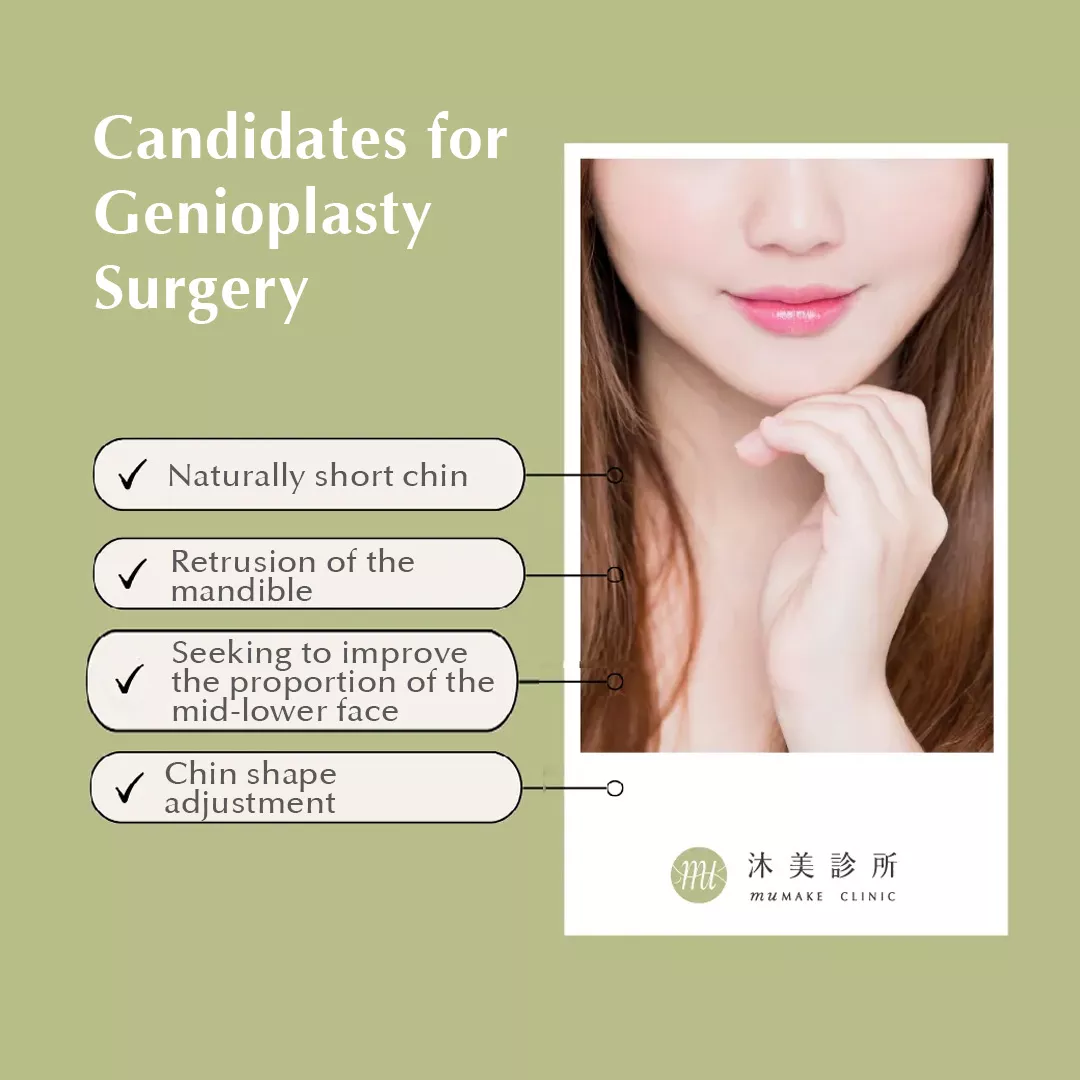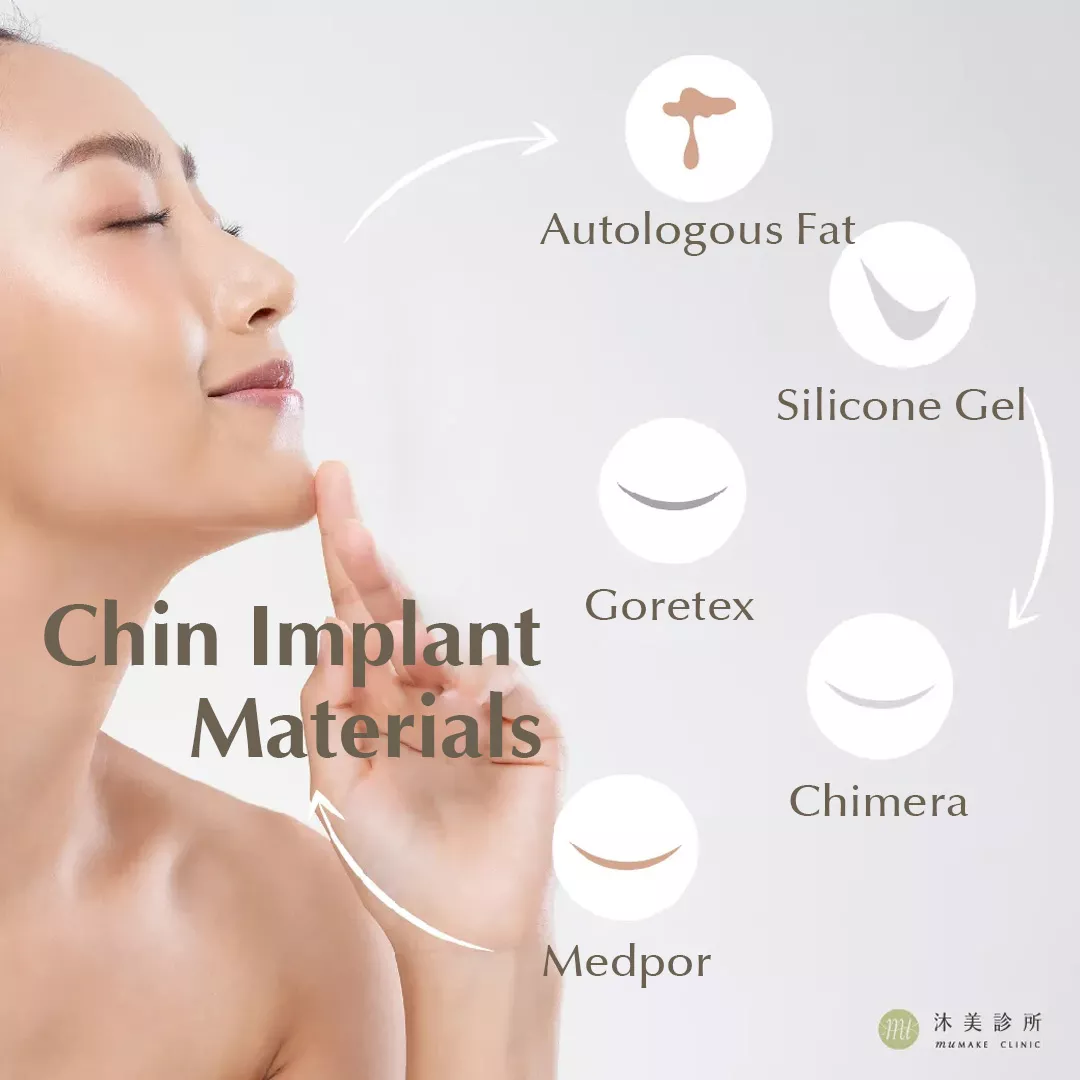Different jawlines give different temperament and impressions. Whether it's a playful slightly upturned chin or an elegant three-dimensional and full chin contour, it needs to complement the client's features, facial proportions, and the length/retrusion degree of the chin to achieve a naturally proportioned sculpted result.
Genioplasty Surgery Candidates

Common Materials for Genioplasty Surgery

In general, besides non-surgical methods like fillers, surgery remains the primary approach for comprehensive correction and lasting results. Common materials include:
Autologous Fat:
Very natural but comes with absorption issues, making it challenging to achieve desired chin projection.
Artificial Implants: Silicone Gel, Chimeric, Goretex, Artificial Bone (Medpor).
Among these, Artificial Bone (Medpor) is a porous polyethylene with a pore size of around 100um, designed for complete fusion with the periosteum, ensuring high compatibility. It serves as an extension of the chin skeleton, minimizing the risk of inflammation and capsule contracture.
For clients with already good chin conditions, choosing Chimeric or Goretex chin implants can yield satisfactory results with the added benefits of a short recovery period and lower costs. However, for individuals with less favorable bone conditions, using conventional chin materials might result in implant borders or persistent asymmetry issues. For extensive chin defects, severe chin bone retrusion, facial asymmetry, previous or anticipated issues with chin inflammation, or concerns about postoperative foreign body sensation, opting for Artificial Bone (Medpor) is currently the best choice.
Using Artificial Bone for chin augmentation can be complemented by computer simulations and 3D printing technology. This involves 3D printing an individual's mandibular bone, shaping the Artificial Bone (Medpor) to aesthetic proportions based on the bone model, and surgically placing it in the client's chin.
Alternatively, for clients who insist on avoiding artificial implants and have a significantly wide or retrusive chin, jawbone reduction may be combined with autologous bone grafting.

Surgical Approaches

Witness
※The case photos in this text are clinic's pre- and post-operative photos, used for treatment explanation or supplementary educational information. They are for reference only. According to the announcement of the Ministry of Health and Welfare, the case records obtained patient consent and are not medical advertisements.



Q:Can I undergo a chin augmentation surgery if I have recently had facial fillers?
A:It depends on the dosage of the fillers and their absorption status. Generally, it is advisable to wait until the fillers have settled or been mostly absorbed before proceeding with the surgery.
Q:Can I have a chin augmentation surgery if I wear braces or a dental appliance?
A:It is recommended to undergo chin augmentation surgery after completing orthodontic treatment to ensure precision in the overall facial contour.
Q:Is it possible to eat and speak normally after the surgery?
A:Yes, you can. However, it is advisable to avoid consuming spicy foods in the initial stages to prevent any impact on the healing of the incision.
Q:Is there a risk of infection or inflammation after the surgery?
A:Our operating room at Mu Mei is equipped with a ceiling HEPA filtration system and seamless walls, significantly reducing the risk of infection. It is crucial to follow postoperative instructions, rest properly, and allow the incision to heal. In case of infection, prompt return to the clinic for early treatment is recommended.
Q:Where is the incision for the genioplasty surgery, and will the scar be noticeable?
A:The incision for genioplasty surgery can be done using either an internal or external approach. If an internal approach is chosen, there will be no visible scars or incisions.




 Booking Now
Booking Now  Messenger
Messenger  LINE
LINE 


